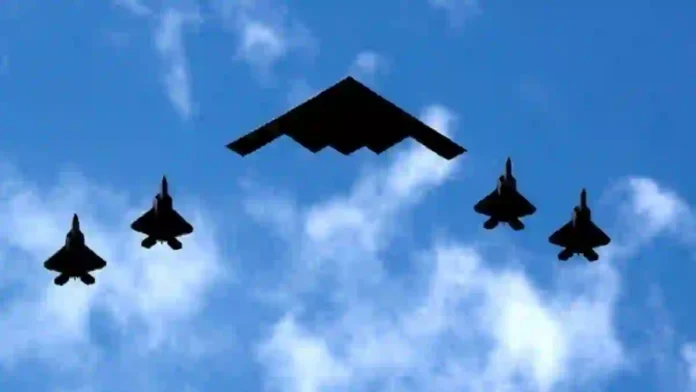On Saturday, June 21, 2025, the United States entered into open conflict with Iran by launching coordinated airstrikes on three of Iran’s most significant nuclear sites: Fordow, Natanz, and Isfahan. President Donald Trump announced the operation through his social media platform, declaring that the U.S. military had “successfully completed” the attack, with all aircraft safely returning from Iranian airspace after dropping a full payload of bombs, particularly focusing on the heavily fortified Fordow facility.
This marked a dramatic escalation in the ongoing hostilities in the Middle East, as the U.S. joined Israel’s campaign to cripple Iran’s nuclear capabilities—a campaign that had already seen over a week of Israeli strikes aimed at degrading Iran’s air defences, missile systems, and nuclear infrastructure.
Read- Trump’s Shifting Alliance: The Case for India’s Strategic Pivot From GE To SAFRAN
The decision to strike came after days of deliberation within the White House, with President Trump weighing the risks and potential consequences of direct involvement. The strikes were carried out using advanced American stealth bombers equipped with massive bunker-buster ordnance, specifically designed to penetrate deeply buried and reinforced targets that conventional munitions could not reach. Israeli officials were notified in advance, and President Trump spoke with Israeli Prime Minister Benjamin Netanyahu following the operation, underscoring the close coordination between the two allies.
The immediate impact of the strikes on Iran’s uranium enrichment capabilities and broader nuclear ambitions remains uncertain. While President Trump proclaimed that the targeted facilities had been “completely and utterly destroyed,” independent verification and assessments of the actual damage are still pending.
The strikes were described as a “spectacular military success” by the administration, but concerns persist regarding the potential for radioactive contamination, especially if future attacks were to target Iran’s commercial nuclear reactors, such as the one at Bushehr—a scenario that international nuclear watchdogs have warned could have catastrophic environmental consequences.
Read- Indian Defence Delegation Meets French Officials In Paris; Rafale Marine Program Formally Launched
Read- 40 China J-35 Jets For Pak, India’s 5th Gen Decade Away: IAF Veterans Weigh In
Iran had previously vowed to retaliate if the U.S. intervened militarily, raising fears of a wider regional conflict. The escalation follows a period of intense missile and drone exchanges between Iran and Israel, with significant casualties reported on both sides and mounting international concern over the potential for further destabilisation.
In his post-strike remarks, President Trump issued a stark ultimatum to Iran, stating that the country now faced a choice between pursuing peace or risking “catastrophe far exceeding what we have seen in the past eight days,” and warning of additional, more severe strikes should hostilities continue.
The U.S. entry into the conflict represents a major shift in American foreign policy, particularly given President Trump’s previous pledges to avoid costly foreign wars.
The administration’s actions have effectively ended hopes for a brokered ceasefire and signalled a willingness to use overwhelming military force to achieve strategic objectives in the region. As the world awaits Iran’s response and President Trump’s scheduled national address, the full ramifications of this intervention—for regional stability, global nuclear non-proliferation efforts, and U.S. engagement in the Middle East—remain to be seen.
Agencies




